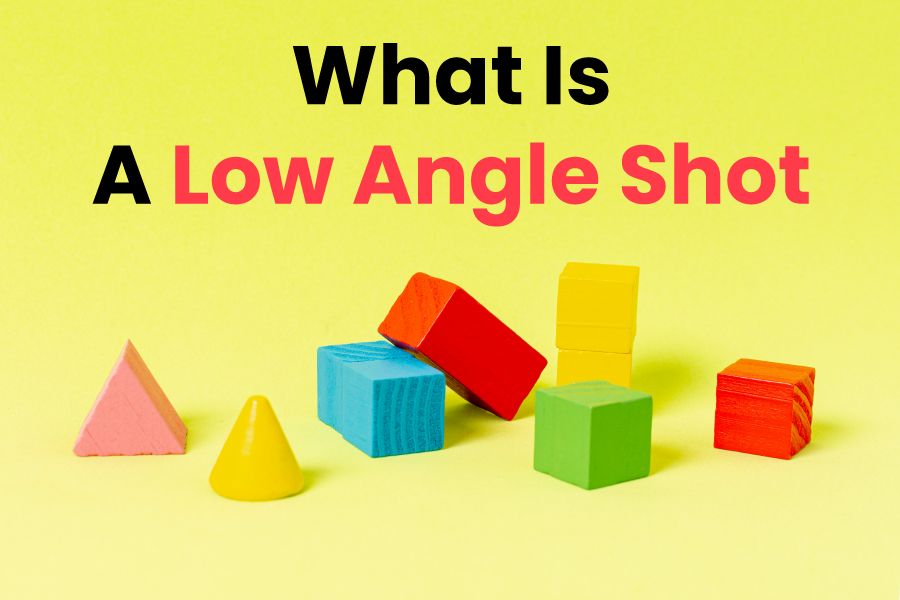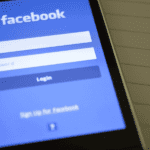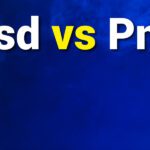We’ll answer the question, “What is a low-angle shot?” But before we dive into that, why do modern filmmakers like to create diverse shots with their cameras? Well, the simple reason is to develop an emotional connection with the audience.
Filmmakers are highly creative. They use a range of cameras to take diverse shots to evoke emotions. These include low-angle shots, close-up shots, extreme shots, and even point-of-view shots.
Here, we’ll only focus on the low-angle shot. After reading this post, you’ll understand the meaning, benefits, and more. Keep reading for more information.
What Is A Low Angle Shot?
The low-angle shot involves the positioning of the camera when capturing a character. Unlike other types of shots, in a low-angle shot, you have to place the camera below your eye line and point upward. Additionally, the camera has to be on a vertical axis.
The camera can be below the feet of the character you’re capturing. However, when you place the camera this way, then it’s called the extreme low-angle shot.
What Is The Use of A Low Angle Shot?
The low-angle shot is a technique cinematographers use to create an emotional appeal between a character and the audience. They use it to make a character appear powerful.
In the same way, cinematographers can use low-angle shots to make a character appear powerless.
An example of a movie the low angle shot was used is Wachowski’s Matrix series, Breaking Bad, and Pulp Fiction.
How To Improve Your Low-Angle Shot Pictures
The main priority of every cinematographer is to capture quality photos and appeal to the emotions of the target audience. Below are the different ways you can improve your low-angle photos.
- When taking low-angle shot photos, lay down completely on the floor, then frame the image using a viewfinder.
- Shoot your photos using the tilt or LCD screen on your camera.
- You can capture multiple pictures without utilizing your LCD screen or viewfinder. How? Lie on the floor, as this will ensure you get a good angle shot. Another way to capture quality photos is to shoot blindly.
- Utilize a small and sturdy tabletop tripod. You can use a tripod that is 6 inches (approximately 15 cm) tall.
The Benefits of A Low-Angle Shot
How beneficial is a low-angle shot? Check them out below.
1: You can use low-angle shots to make your subject appear more majestic:
Low low-angle shots are valuable in situations where you may want to enhance your subject’s appearance. These include situations where you want your subject to appear to the audience in a specific type of way.
A good example is when you want to make a shorter model or character appear taller and more majestic to the audience. You can make the person’s leg appear taller to the audience.
So, choose from a low angle to make your subject appear more majestic, taller, and elegant.
2: Gives the subject a completely new perspective:
Perspective means the opinion someone has about something. As a photographer, the reason you would want to capture a photo using the low-angle shot technique is to get a different perspective of the object.
Low-angle shot photos’ uniqueness changes a character and story. This sort of shot adds elegance to a story and makes the characters appear different.
3: Gives your subject a heroic appeal:
Low-angle photography gives that heroic appeal that makes the viewers develop deeper feelings for the character you’re capturing. It helps to create a better perspective for your character, making it more appealing to the target audience.
4: Capture your target audience’s attention:
People have low attention spans, and it’s not their fault. There are too many creative materials to consume these days. Photographers are seeking creative ways to make their photos stand out and are churning out millions of photos every day.
Using low-angle shots, you can create photos that will attract your target audience and keep them hooked to your story. You can make your audience generate a strong emotional connection with your subject.
Getting people’s attention these days is quite a tough challenge. You’ll need something extra to create a strong emotional appeal for your subject. So, create photos that have an emotional attraction to your products.
5: Make your views focus their eyes on the subject:
When taking low-angle shots, you may want to emphasize your subject. You would want your target audience to focus on the subject. But how can this be possible?
You can direct your audience to focus their attention on the subject via the leading lines in the background. In other words, the leading line comes from the background. And they are parallel to each other in a frame.
The leading lines can come from a range of objects. These include storefronts and even skyscrapers. These lines will guide your viewers to the subject and make them focus on it.
6: Valuable for when you want to make your subject appear more superior:
When you capture images from eye level, how do they appear? They appear original and life-like. What about when you capture an image from a low angle? Everything changes!
The low-angle shot is valuable when you want to break out from the cliché. It lets you create photos that appear far more superior.
In other words, the low-angle shot makes your photos appear distorted, unique, and superior. It changes the subject entirely and helps you deliver your messages clearly.
Try capturing shapes such as circles or squares for a better understanding of what we’re trying to describe. The shapes will appear distorted.
So, low-angle shots are essential when looking to create unique photos and make your subject appear superior.
7: Use low-angle shots for capturing the motion blurs of entertainers:
Capturing low-angle shots in events can add a whole new level of appeal to the subject. You can use it to capture the motion blurs of entertainers in events to create a whole new level of engagement with the audience.
So, add to the excitement your viewers already have by capturing the motion blurs of performances using low-angle shots. Create unique and memorable feelings for your viewers.
8: Removes distraction from the background:
How do the backgrounds of images captured above eye level appear? They normally appear distracting and could make the viewers lose interest in the subject.
The reverse is the case when you use a low-angle shot. It simplifies the background and causes users to focus on the subject. In the absence of distractions, users can focus on the subject.
9: Useful for creating high-quality and impact photos of kids:
Children enjoy expressing their emotions themselves by making diverse facial expressions. They can twist their faces to look different and convey emotions, and this makes them unique.
You can create high-impact photos of kids with low-angle shots. Just position yourself below their eyes and click to create your images.
10: Reflections and shadows create unique perspectives:
Click reflections and shadows when taking low-angle shots. That’s one of the unique ways to take a shot using this angle technique.
What makes clicking reflections and shadows unique? When you do, it helps you create an extreme perspective. In this case, shadows become longer and shorter, depending on the set time frame.
The reflection closer a bit to the camera will appear larger, while the one far away will appear smaller.
How The Low Angle Shot Is Used: 4 Techniques To Understand
Low-angle shot is a great technique photographers usually deploy to make their photos stand out. However, the execution is what matters the most. If you don’t execute the angle shot properly, you won’t achieve the impact you hope to create.
You can use the low-angle shot to convey emotion and build tension without even speaking a word, all with photos.
So, here, we’ll explain how to use the low-angle shot, concentrating on four techniques. Let’s dive in.
1: Extreme Low Angle:
What does an extreme low-angle shot imply? This type of angle shot is popular for showing the perspective of kids. It is also useful to showcase an individual expressing immense fear.
2: Classic subtle hero:
A low-angle shot usually sits below the eye line of the individual or subject, forcing the target audience to look upward.
This low-angle shot technique is crucial to making the subject appear appealing. It highlights the hero or heroine (character) in the scene.
3: Low angle establishing shot:
The establishing shot displays to the audience a new character, location, or other elements. And when combined with a low-angle camera, it displays the magnitude of the scene, leaving the viewers in awe.
The establishing shot makes viewers feel part of the story. That’s what makes it unique.
4: Low angle dolly push:
Have you tried combining a dolly push and a low angle? The result is out of this world. It builds dramatic tension and creates a unique cinematic experience.
You can also use this low-angle shot for the introduction of vital characters with movement. Add drama for the entire length of the shot. Use a dolly-mounted camera. It will help you to get the job done.
Low Angle Shot Examples
Low-angle shot is a popular technique. It is valuable for making a character unique and appealing to an audience. Photographers can use low-angle shots to make a character appear stronger, heroic, or frightening. You can also use it to do the reverse.
Here, we discussed several examples where the low-angle shot was used.
Pulp Fiction:
Pulp Fiction is a 1994 movie featuring several big names in Hollywood. Examples include Samuel L. Jackson.
The director of the movie, Quentin Tarantino, is a popular name in the movie industry. He has a lot of experience and evidence to prove he’s ahead of many others.
Quentin used a trunk shot to mount his low-angle camera. The shot becomes evident when other characters open the trunk to take guns and other weapons.
Star Wars:
In this movie, Darth Vader is a frightening and imposing villain for some reason. First is how the filmmaker showed him on the screen. Another is Vader shooting at him from a low angle. This makes him appear taller and more imposing.
Bad Boys:
Michael Bay is no stranger to low-angle shots. He’s popular for adding unique spins to such shots, which earned him the nickname “Michael Bay 360 Shot.”
This camera movement is circular, as the name suggests, and is used for special moments. An example is when a character is grasping the gravity of a challenge or going through a huge reveal.
The Dark Knight:
If you have watched the “Dark Knight” and noted how most of the shots were, you’ll know the power of low-angle shots. Capturing the villain with this sort of shot made him appear powerful and indestructible.
An example of when the low angle shot was used in the movie was the scene where Batman flipped his truck, revealing the Joker’s wild nature.
Full Metal Jacket:
If you watch some of the scenes in the movie, “Full Metal Jacket,” you’ll discover the drill sergeant appears at eye level.
Something happens when he changes focus to Private Joker, another popular character; the angle moves lower. And when it does, the audience appears in the Joker’s point of view, creating a dominated feeling.
Conclusion
What is a low-angle shot? You can get this type of shot based on how you place the camera. In other words, you can capture the low-angle shots by placing the camera below the eye line and facing upward.
The low-angle shot is a technique photographers use to make a character appear stronger, imposing, and striking. It helps to capture the attention of the audience and keep them hooked to the character.
You can use the low-angle shot to make characters appear taller. For instance, you can make a short model appear taller. In addition, you can use the low-angle shot to make a villain appear more frightening.
The qualities of your photos matter a great deal. That is why it is good to find the right photo editors to make your photos appear more professional and captivating.
Professional photo editing agencies like Designyep have shown that photo editing can be better. You can contact us for your photo editing needs.



